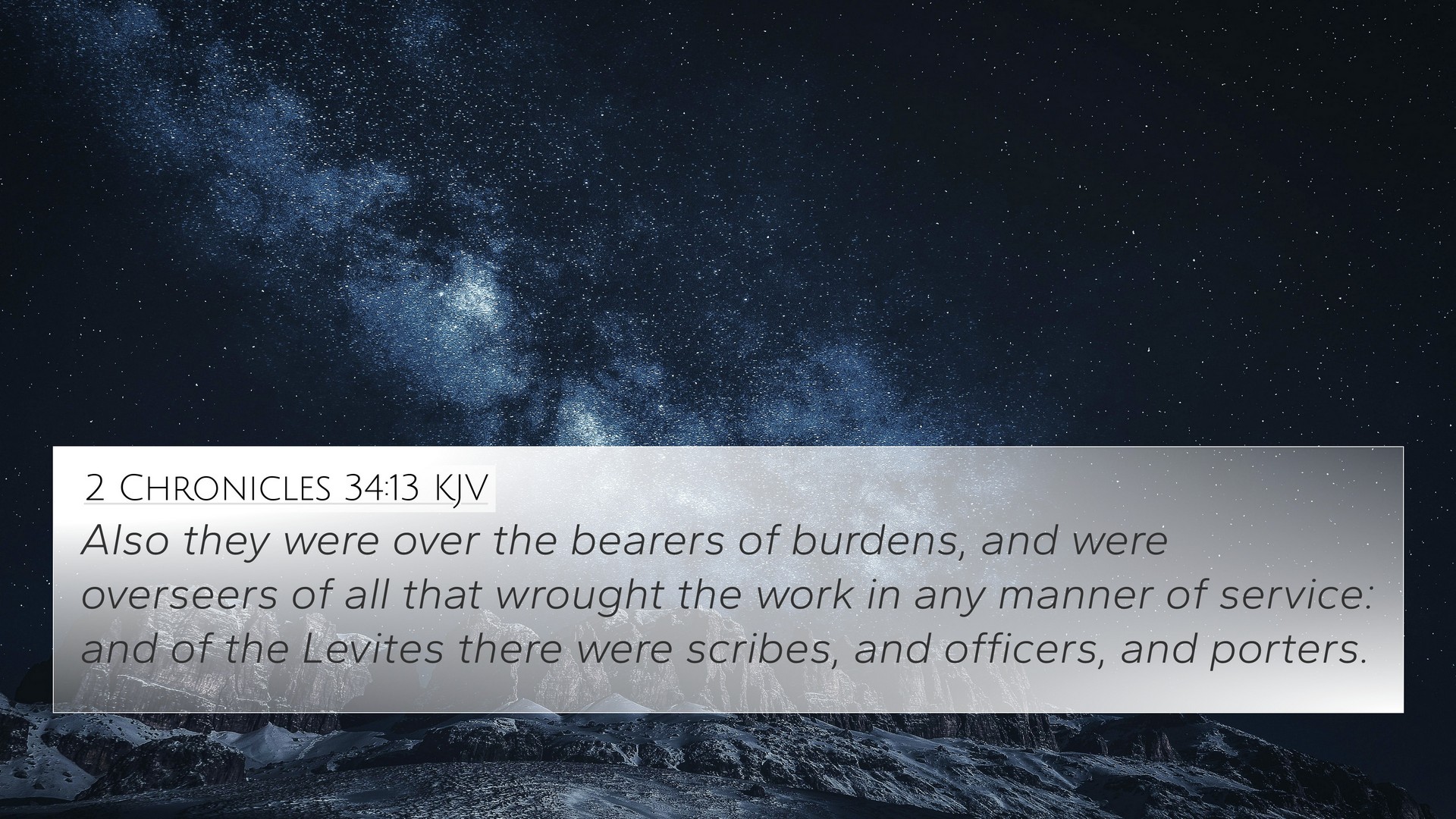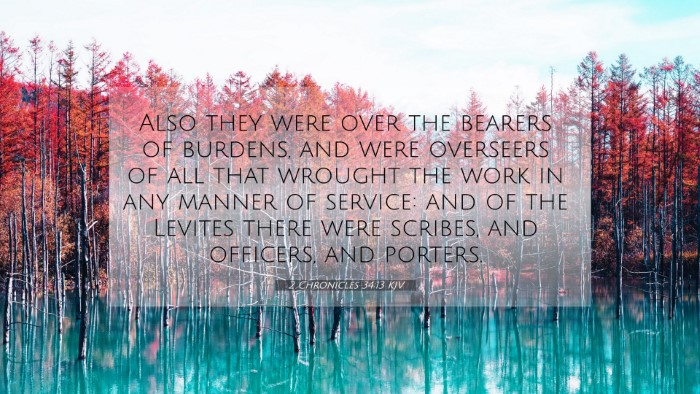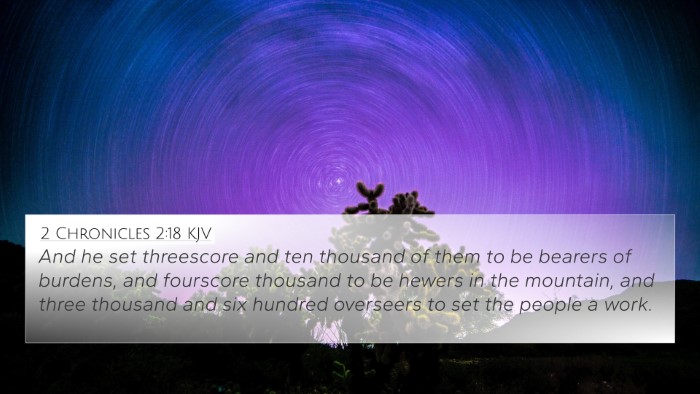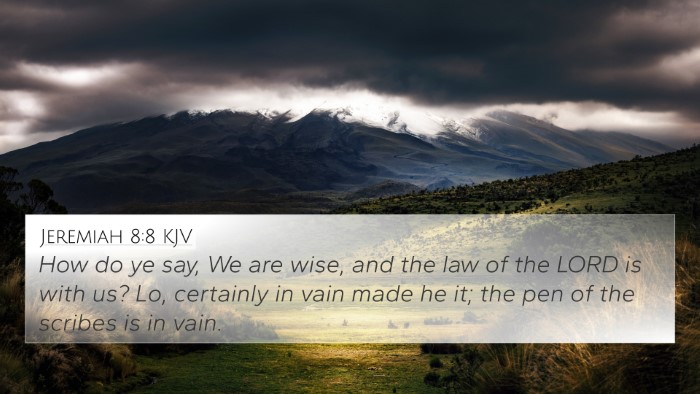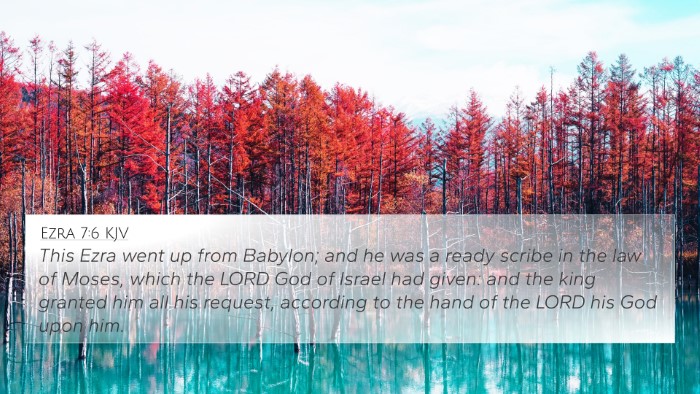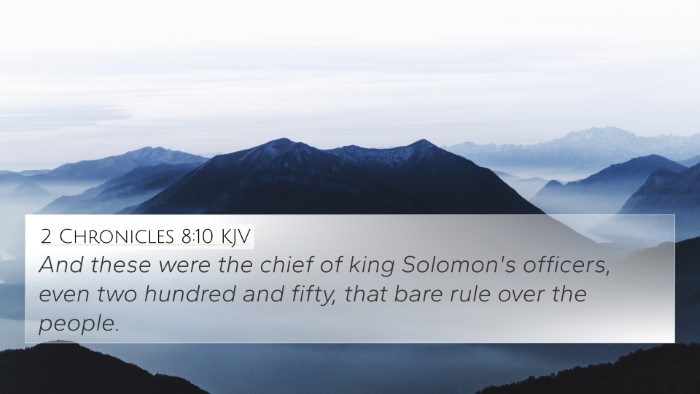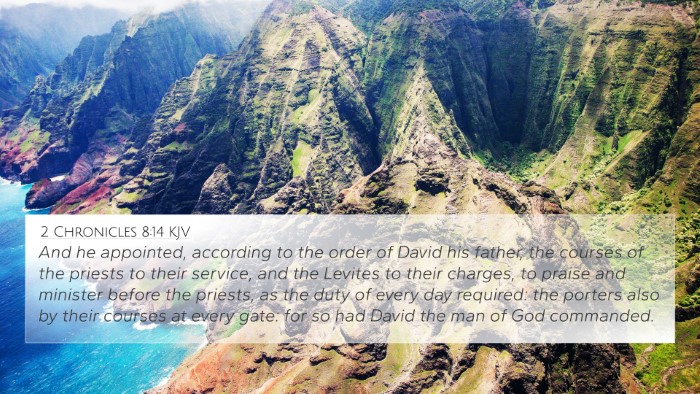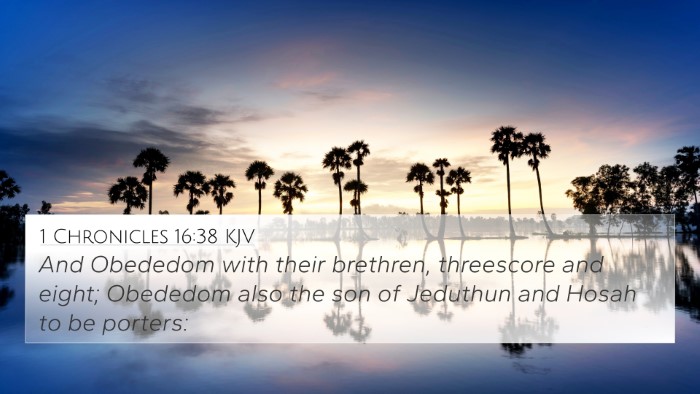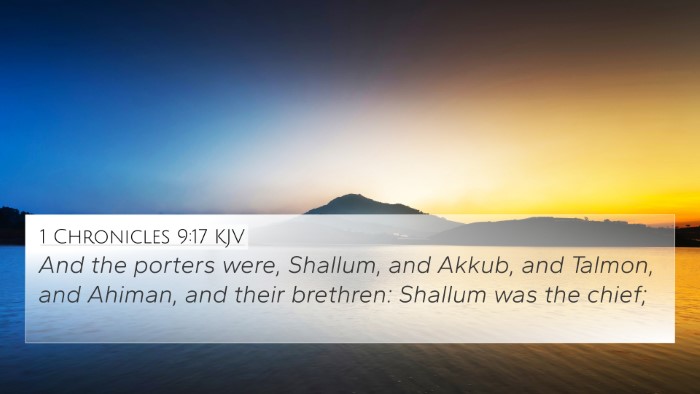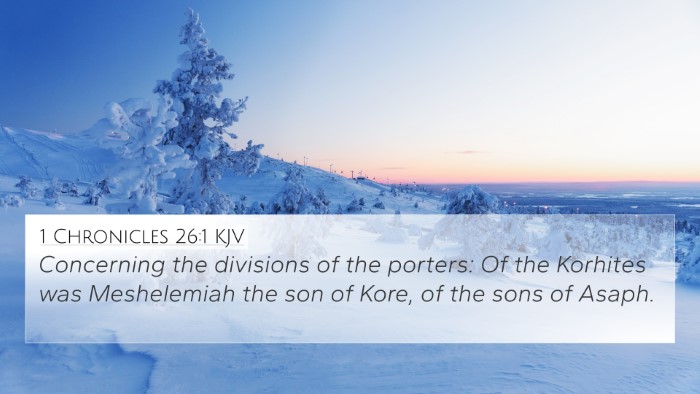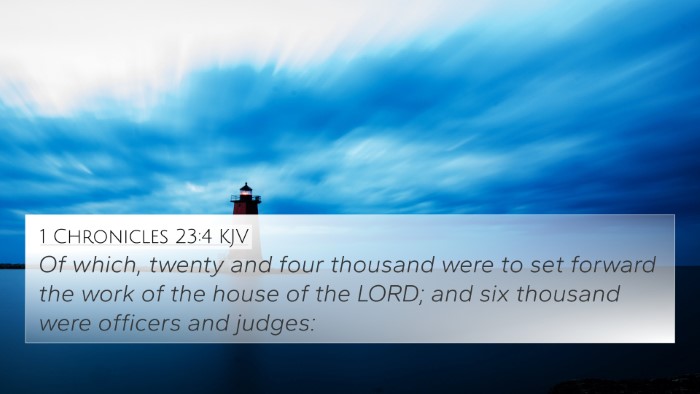Understanding 2 Chronicles 34:13
In this verse, we see the context of the religious reforms initiated under King Josiah. This was a significant time in Israel's history, emphasizing the importance of the Law and the restoration of true worship. Below is a summary of insights from various public domain commentaries, examining the meanings and implications of 2 Chronicles 34:13.
Verse Overview
2 Chronicles 34:13 (KJV) states, "And they were over the bearers of burdens, and were overseers of all the workmen working in the service of the house of the LORD," highlighting the roles of several individuals who were responsible for the restoration of the temple under King Josiah's reign.
Significant Themes
- Leadership and Responsibility: This verse signifies the delegation of tasks among the servants of the temple, illustrating a structured approach to leadership.
- Restoration of Worship: The context reveals the effort to restore proper worship in the temple, which had been neglected.
- The Importance of Order: The organization of workmen indicates that God values order in worship and service.
Commentary Insights
From Matthew Henry
Matthew Henry comments on how the workmen mentioned were integral in setting the house of God in order. He emphasizes the necessity of diligence and proper oversight in spiritual matters, reinforcing the idea of community participation in the restoration process.
From Albert Barnes
Albert Barnes notes the administrative structure surrounding the temple activities. He observes that these individuals were not just laborers; they played a vital role in assisting with God's work, which is a principle applicable in both spiritual and secular settings today.
From Adam Clarke
Adam Clarke highlights the significance of the bearers of burdens, illustrating how the physical labor was accompanied by spiritual responsibility. He suggests that such laborers must be seen as fulfilling God’s work, thus, the work is as important as the worship itself.
Bible Cross References
This passage connects thematically and contextually with several other scriptures, enhancing its understanding:
- 2 Kings 22:5: Discusses the financial management of the temple repairs.
- 2 Chronicles 34:10: Further illustrates the collection of funds for temple restoration.
- Nehemiah 4:6: Relates to rebuilding efforts and the importance of collective effort in ministry.
- Psalms 127:1: Emphasizes that unless the Lord builds the house, the builders labor in vain.
- Hebrews 3:3-4: Connects the work of men to the divine architecture established by God.
- 1 Corinthians 3:9: For we are God’s fellow workers; you are God’s field, God’s building.
- Matthew 25:21: Highlights the principle of faithfulness in service to God.
Connections Between Bible Verses
The connections established through these verses illustrate the narrative of restoration, teamwork, and divine obedience. Here are some key connections:
- Thematic Link: Each passage highlights the necessity of restoring worship and service to God, reflecting on community involvement.
- Role of Leadership: Just as in 2 Chronicles 34:13, leaders are seen in various verses as playing a critical role in guiding others in spiritual matters.
Cross-Referencing Biblical Texts
To fully appreciate the implications of 2 Chronicles 34:13, one can employ a cross-reference study method that reveals how different parts of the Bible dialogue with each other, providing a deeper understanding of divine leadership and community.
Tools for Bible Cross-Referencing
- Bible Concordance: Use a comprehensive concordance to find related verses and understand their context.
- Bible Reference Resources: Utilize various tools available for delineating intricate connections between scripture.
- Cross-reference Bible Study: Engaging with thematic studies can illuminate similarities and disparities in biblical texts.
Conclusion
In conclusion, 2 Chronicles 34:13 is not just a statement about the workmen responsible for the temple but a profound illustration of the orderly nature of God’s work and the community's involvement in service. By cross-referencing this verse with others, one can see a greater picture of restoration, leadership, and divine purpose present within the biblical narrative.
